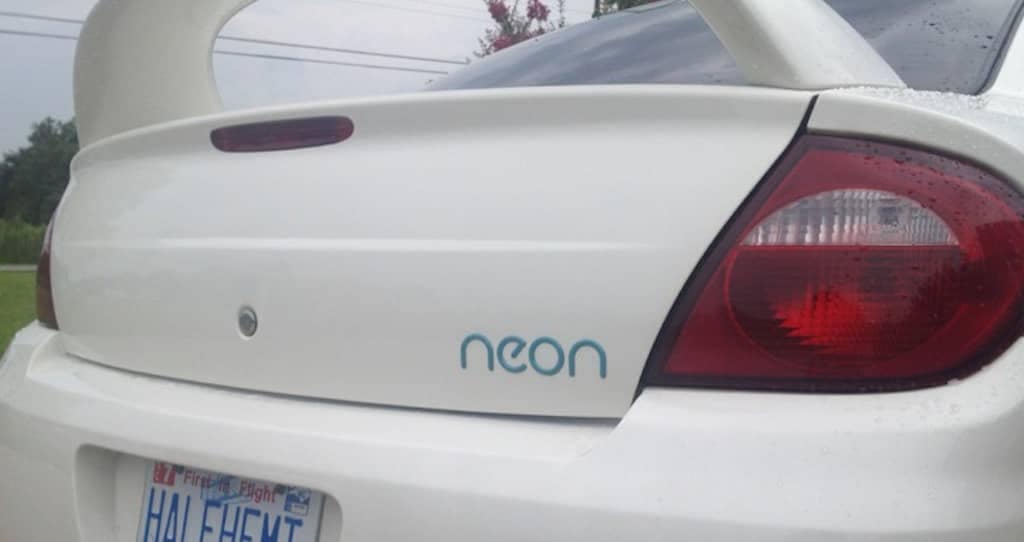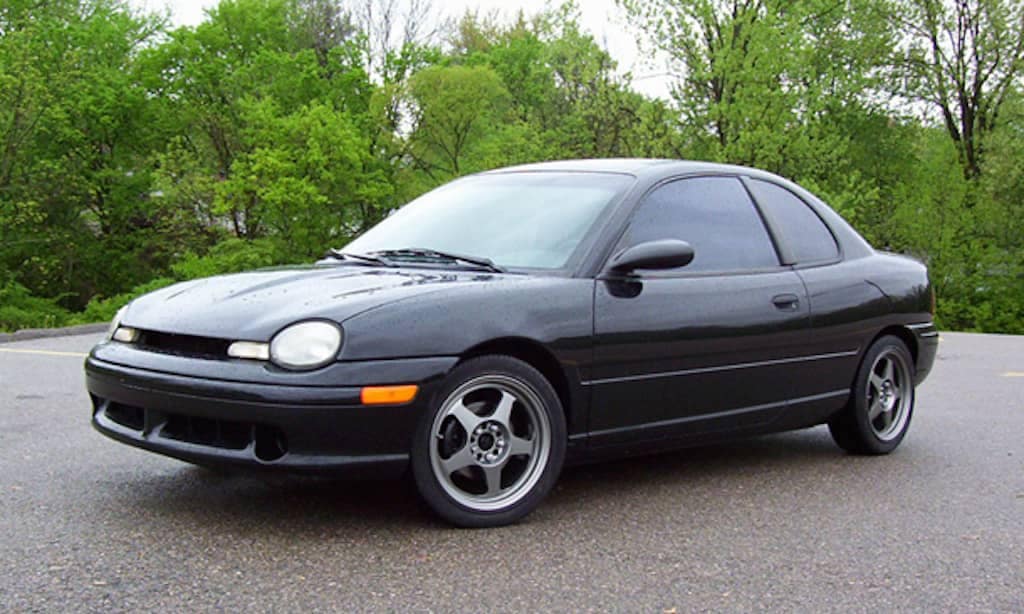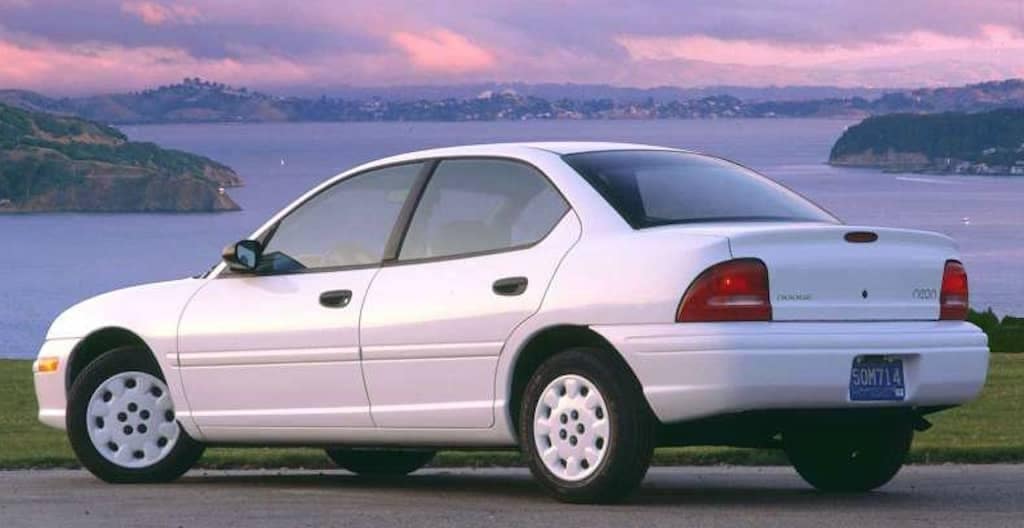(Fondly) Remembering the Dodge Neon
The year was 2007. I was a sophomore in high school and just recently turned 16 years old. Naturally, I wanted my own car, but I also didn’t have the money to afford my own wheels. Eventually, with some help from my parents and family friends, I came across a 2000 Chrysler Neon. The compact front-wheel drive car would serve as the setting for some great high school memories, and I’m pretty sure it’s still being used by my mom’s hairdresser (my parents sold it off once I went to college).
_There’s no denying that it was a reliable car, so allow me to reminisce for the next 1,000 words or so. In fact, when you’re finished reading the review, you may be inclined to visit your local Dodge dealership in Miami . Even if you’re not targeting a Neon, you’ll still be impressed with the company’s impressive selection of vehicles… _
First Generation
With production beginning in 1994 for the 1995 model year, the vehicle was intended to replace the Dodge Shadow, the Dodge Colt, the Plymouth Sundance, and the Plymouth Laser. Branded as a Dodge and Plymouth in the United States and Canada, the vehicle was referred to as a ‘Chrysler Neon’ in Mexico, Europe and Australia.
The first generation Neon was available as either a four-door sedan or two-door coupe. Buyers had the option of opting for the SOHC 2.0-liter 4-cylinder engine (capable of producing 132 horsepower and 129 ft-lbs of torque) or the DOHC 2.0-liter 4-cylinder engine (capable of producing 150 horsepower and 133 ft-lbs of torque). There was also a choice of two transaxle options, the 3-speed Torqueflite automatic or the five-speed manual, and a choice of different trims, including the Base, Highline and Sport.
The Neon could also reportedly accelerate to 60 miles per hour in 7.6 seconds and could travel a quarter mile in 15.9 seconds. As a result, Neons became a staple of SCCA Solo autocross shows and showroom-stock road racing performances.
Regarded as the ‘Japanese car killer’ in the press, the Neon was commended for the reasonable price, slick appearance, power, and speed, especially compared to competitors like the Honda Civic DX, the Nissan Sentra, the Toyota Corolla, and the Chevy Cavalier.
Available in a variety of different, bold colors (including Nitro yellow-green, Lapis Blue and Magenta), the car offered some additional features based on your paint selection. For example, the red and black Neons had bumper covers that were molded, as opposed to painted. This results in a material that could tolerate scratches and dings better than the glossy paint finish.
Second Generation
The second generation of Neons hit the market in 2000. While the first generation of the vehicle offered potential buyers a variety of options, this Neon was only available as a four-door sedan. However, potential buyers did have an option of two engines, including the 2.0-liter SOHC engine (which was capable of producing 132 horsepower) and the Magnum engine (capable of producing 150 horsepower).
The Neon was actually going to include a five-speed manual transmission, which, when paired with the ACR gears, would improve the acceleration. However, the plan was quickly scrapped when the engineers learned that the revamped mechanics compromised fuel economy and a quiet ride.
Advertised as having more than 1,000 refinements from the first generation, it was clear that the brand devoted time and effort to revamping their new vehicle. The frameless windows were replaced by a full-framed door, and that was only one among a variety of changes. All of the interior additions (as well as the larger body) resulted in an increase in curb weight.
Future changes included the addition of large headlights, a crosshair grille and a four-speed automatic transmission. Chrysler ultimately discontinued the car, with the final product rolling off the assembly line in late 2005. The vehicle was replaced by the Dodge Caliber.
Special Models
The ACR Neon had a number of additional features that improved upon the vehicle’s body. The car included four-wheel disc brakes, Arvin non-adjustable struts (or Koni adjustable dampers for later models), sturdy anti-sway bars, less flexible suspension bushings, fast-ratio steering, tough and durable wheel hubs, and a five-speed manual transmission.
Driving an ACR Neon is the only way to identify it from the regular nameplate, as there was no special badging included anywhere on the vehicle. The special-edition Neon was initially only going to be offered to SCCA members, but as the vehicle became available to the general public, the ACR name stuck. The fog light holes in the bumper are a unique, distinguishable feature.
Meanwhile, the Road/Track (or R/T) model was released in 1998. Featuring a DOHC engine with a 3.95 5-speed manual transmission, the R/T was similar to the ACR, but it was intended to be driven on the street. The vehicle was specifically designed to provide the driver and passengers with more comfort. These Neons could be identified by the optional stripes or the R/T badging on the door handles.
After taking a year off in 1999, the R/T returned as a second generation Neon. The vehicle features a new SOHC Magnum 2.0-liter engine (which could deliver 150 horsepower), 16-inch wheels, a new spoiler, and dual chrome exhaust tip, among other features.
To commemorate Dodge’s return to NASCAR, Dodge produced a sport package for the 2001 model. Containing a number of similarities to the R/T, the sport package also featured tires with the Goodyear NASCAR logo, ‘Dodge Motorsports’ stickers, a dual exhaust, and fog lamps. Featuring automatic transmission, the car could reach a maximum of 132 horsepower.
Other Fun Facts
The Neon was the first small car produced by Chrysler that was sold in Japan. It differed slightly from the United States version, featuring amber turn signals (which were required under Japanese regulations) and right hand drive capabilities. One thing that unfortunately (for the manufacturers) stayed the same was the vehicle’s width dimensions, which didn’t comply with the Japanese regulations.
Having been placed in a less-desirable class, Neon sales struggled in comparison to the less-expensive rival vehicles. Consumers were also required to pay an additional tax for having purchased a Neon, so Dodge added a limited number of features to entice potential buyers. The strategy did not work out.
I’m not the only one to remember the Neon fondly. Mr. Regular over at RoadAndTrack.com noted that the vehicle was the “fastest economy [car]” of the 1990s, and for $13,000, you really couldn’t get a better buy. While the Cavalier was about $500 cheaper, the Neon offered a significantly better driving experience. Plus, to put it over the top, the Neon was “a 100 percent American concept.” Of course, you probably already expected that from Dodge.
So was our prediction correct? Are you itching to get your hands on any Dodge vehicle? Luckily, Miami Lakes Automall has you covered. Head on down to the dealership and check out our supply of Dodge cars and trucks. You may not come across a Dodge Neon, but we can assure you that you’ll still be happy with your selection. In fact, I’d reckon that you’ll one day be reminiscing about your Dodge vehicle, just like I was allowed to do.
Previous Post The Force is at Dodge Dealerships in Miami Next Post 2016 Dodge Charger Pursuit Integrates Uconnect System









0 comment(s) so far on (Fondly) Remembering the Dodge Neon